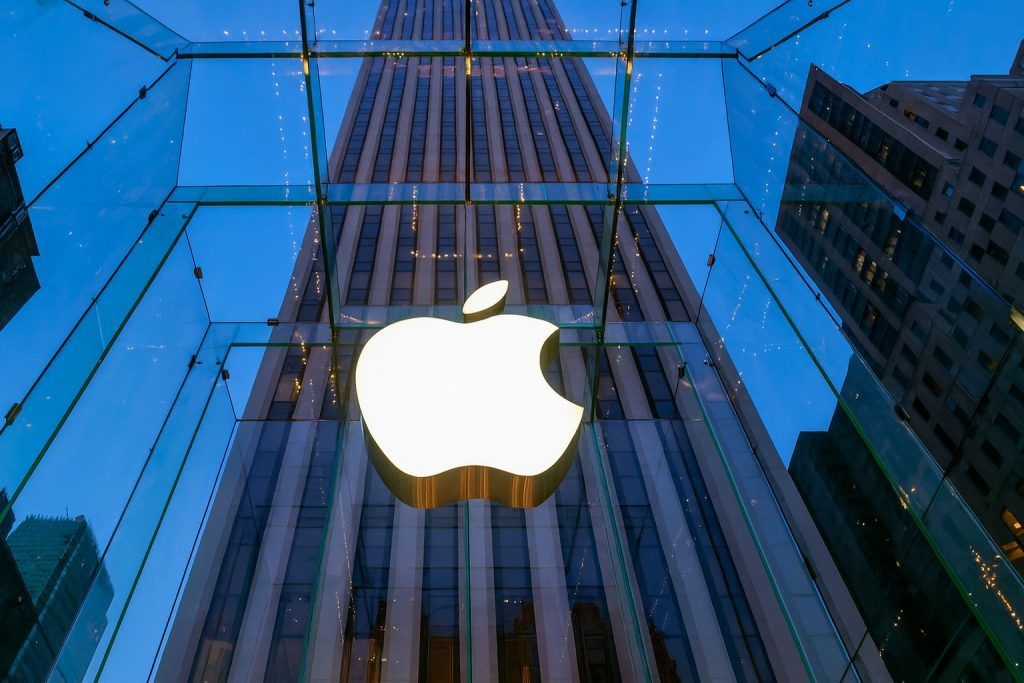Amazon.com (NASDAQ: AMZN) closed lower on Friday, November 14, 2025, as renewed pressure on megacap tech stocks and a flurry of regulatory, legal, and AI‑policy headlines weighed on sentiment. Shares finished the regular session at $234.69, down $2.89 (-1.22%) on the day, before ticking modestly higher in after‑hours trading. [1]
Investors were juggling several Amazon‑specific storylines: a French consumer watchdog accused the company of failing to keep minors away from adult content, Amazon joined Microsoft in backing new US rules that could curb Nvidia’s AI‑chip exports to China, a disability‑rights class action targeted its worker absence policy, and AWS rolled out a notable Lambda upgrade while the retail business launched fresh AI‑driven shopping tools ahead of the holidays. [2]
Here’s how Amazon stock traded today, what moved the price, and how it fits into the company’s 2025 story.
Amazon stock price today: AMZN after the closing bell
Key trading stats for November 14, 2025 (regular session): [3]
- Closing price:$234.69
- Daily move:–$2.89 (–1.22%)
- Open / high / low: Opened at about $235.06, traded between roughly $232.89 and $238.73 during the session.
- Volume: Around 38 million shares changed hands, a bit below the recent average of ~46 million.
- After‑hours: As of about 4:30 p.m. ET, AMZN was quoted near $234.97, up 0.12% from the close. [4]
From a longer‑term perspective, Amazon:
- Sits roughly 9% below its 52‑week high of $258.60 set on November 3, 2025.
- Remains about 45% above its 52‑week low of $161.38 from April. [5]
- Carries a trailing P/E ratio around 34–36x and a market cap near $2.6 trillion, based on trailing EPS of about $7.08. [6]
In other words, even after a three‑day pullback from recent highs, AMZN is still priced as a premium growth and AI platform rather than a mature, low‑growth retailer.
Why AMZN slipped today
1. Macro pressure on megacap tech and AI names
Broad market conditions didn’t do Amazon any favors.
U.S. stocks were volatile on Friday as investors reassessed the odds of a Federal Reserve rate cut in December, which have fallen sharply as Fed officials sounded more cautious. Reuters reported that worries over “stretched” AI stock valuations and megacap tech led to another wave of selling, putting the Nasdaq on track for its longest losing streak since April before a late‑day stabilisation. [7]
For a company like Amazon — a member of the “Mag 7” AI and cloud leaders — this kind of risk‑off rotation typically shows up as:
- Multiple compression: Investors become less willing to pay 35x+ earnings for future AI growth.
- Higher sensitivity to rate expectations: Longer‑duration cash flows (like cloud and AI revenue streams) get discounted more when rate‑cut hopes fade.
That macro backdrop set the stage for Amazon’s roughly 1.2% slide today, even though the broader Nasdaq ended roughly flat after recovering from deeper morning losses. [8]
2. Amazon steps into an AI‑chip export fight
One of the most consequential headlines for Amazon’s long‑term AI ambitions came from Washington rather than Wall Street.
According to Reuters, Amazon and Microsoft have thrown their support behind the bipartisan GAIN AI Act, legislation that would tighten restrictions on Nvidia’s export of advanced AI chips to China and prioritize U.S. demand. [9]
Key points from this development:
- The bill aims to ensure that US cloud and AI companies get first call on scarce high‑end Nvidia GPUs before they are shipped abroad. [10]
- Nvidia, whose stock has been under pressure in recent weeks, could see a further hit to Chinese revenues if the bill passes. [11]
- Amazon’s backing signals how central AI infrastructure security has become for AWS — and that Amazon is willing to support tighter export controls even if it complicates supply chains.
For investors, this is a double‑edged sword:
- Positive: Prioritizing domestic supply could protect AWS’s access to the chips that power its Bedrock, Trainium‑based, and agentic AI offerings. [12]
- Negative: It underscores how politicised and constrained the AI‑hardware market is becoming, adding another layer of regulatory and geopolitical risk.
3. Regulatory scrutiny in France over illicit online content
In Europe, Amazon was name‑checked in a new enforcement push.
France’s consumer watchdog DGCCRF found that several online platforms — including Amazon — had broken rules around illicit products and adult content, according to a spokesperson for the French trade ministry. [13]
Reuters reports that:
- Platforms like AliExpress and Joom were found selling problematic products, while Wish, Temu, eBay and U.S‑based Amazon failed to adequately filter minors from adult content. [14]
- France has referred the matter to public prosecutors and plans to bring EU commerce ministers together to discuss broader measures against illicit online goods. [15]
Financially, any eventual fines are unlikely to be material for a company of Amazon’s size. But:
- It adds to an already crowded regulatory docket for Amazon in the EU, spanning competition, labor, and data issues.
- It reinforces the narrative risk that Amazon’s marketplaces need tighter oversight, something that can influence investor perceptions of long‑run margin and compliance costs.
4. Labor and legal headlines: disability policy and layoffs
Amazon also faced labor‑related scrutiny this week, which can affect how investors think about operating risk and brand perception.
Disability‑rights class action over absence policy
Reuters reported that a proposed class‑action lawsuit filed in New York federal court accuses Amazon of using a “punitive” absence‑control system that allegedly disadvantages workers with disabilities by penalizing them for medically necessary absences. [16]
The suit claims:
- Workers faced write‑ups or termination threats when they exceeded absence limits, even when time off was tied to disability or medical conditions.
- The policy may violate the Americans with Disabilities Act (ADA) if the court agrees it fails to provide reasonable accommodations. [17]
Amazon has said it complies with the law and disputes the allegations, but the case highlights:
- Litigation risk around workforce management, especially for a company with over a million employees.
- The tension between attendance‑driven productivity metrics and disability accommodations.
Corporate layoffs and restructuring
Separately, local and national coverage this week detailed fresh corporate job cuts in New York, involving roughly 660–700 roles across nine offices, as part of a broader restructuring drive announced in late October. [18]
Those cuts build on an earlier Reuters report that Amazon is targeting up to 30,000 corporate job reductions globally, as it refocuses spending on AI infrastructure, cloud, and high‑priority retail initiatives. [19]
For investors, this has two competing readings:
- Bullish angle: Leaner overhead and a mix‑shift toward high‑margin AWS and advertising could support margins and free cash flow over time.
- Bearish angle: Persistent rounds of layoffs may signal internal cost pressure and execution risk, particularly if they affect key product and AI teams.
5. AWS and product innovation: the bright spots
Despite Friday’s pullback, Amazon continued to ship new features across cloud and retail — the drivers most bulls care about.
AWS Lambda: faster scaling for event‑driven apps
On the AWS side, Amazon announced general availability of “provisioned mode” for AWS Lambda with Amazon SQS event‑source mapping. [20]
The new capability:
- Provides 3x faster scaling and up to 16x higher concurrency for SQS‑triggered Lambda workloads.
- Lets customers configure dedicated event‑polling resources, helping them handle sudden traffic spikes with lower latency while keeping tighter control over throughput and costs. [21]
Why it matters for the stock:
- It strengthens AWS’s position in serverless and event‑driven architectures, a fast‑growing workload category.
- It reinforces the narrative that AWS is still innovating aggressively, not just spending money on data centers.
Amazon Lens Live, Haul, and holiday retail momentum
On the retail side, Amazon’s own news hub highlighted several consumer‑facing launches dated November 14: [22]
- Amazon Lens Live – a visual search and AI shopping assistant that lets users scan real‑world items and instantly see product matches on Amazon.
- Amazon Haul – a low‑priced shopping experience that has expanded to 25 locations with more markets planned for 2026, targeting ultra‑value shoppers.
- Extensive content and promotions around Black Friday Week, Cyber Monday, and Thursday Night Football on Prime Video, all of which feed both merchandise sales and advertising inventory. [23]
These retail and media moves tie directly into a theme highlighted by 24/7 Wall St and other analysts: advertising is emerging as Amazon’s third major profit engine, alongside e‑commerce and AWS. The site estimates Amazon’s ad business generated about $56 billion in 2024, helped by ads on Prime Video and NFL Thursday Night Football, and is now one of the world’s largest digital advertising platforms. [24]
How today fits into Amazon’s 2025 story
Q3 2025 earnings were strong – and the bar is high
Investors are still digesting Amazon’s Q3 FY 2025 results, reported at the end of October.
According to the company’s filings and independent analysis: [25]
- Net sales:$180.2 billion, up about 13% year‑on‑year, beating Wall Street expectations (~$177.8 billion).
- Segment revenue:
- North America: $106.3B (+11% YoY)
- International: $40.9B (+14% YoY)
- AWS: $33.0B (+20% YoY), marking a re‑acceleration in cloud growth as AI workloads ramp.
- Operating income:$17.4B (9.7% margin); excluding special charges, it would have been about $21.7B.
- Net income: Roughly $21.2B, up 38% YoY, with diluted EPS of $1.95, up 36%.
Management also guided for Q4 2025 revenue of $206–213 billion and operating income of $21–26 billion, signaling confidence heading into the critical holiday quarter despite heavy AI‑infrastructure capex. [26]
The market initially cheered: AMZN jumped around 10% after earnings, and the stock went on to set a 52‑week high of $258.60 on November 3. [27]
Since that peak, Amazon has:
- Pulled back about 9% to today’s $234.69 close. [28]
- Still gained roughly 11% over the past year and remains more than 45% above its 52‑week low. [29]
In other words, today’s decline looks more like a post‑earnings consolidation in a strong uptrend than a fundamental reset — at least so far.
Analyst sentiment: still bullish, but free cash flow is under the microscope
Wall Street remains generally positive on Amazon:
- MarketBeat data shows dozens of “Buy” or “Strong Buy” ratings, just one “Sell,” and a consensus 12‑month price target around $294, implying meaningful upside from current levels. [30]
- Recent analyst notes have nudged price targets into the $270–$315 range following Q3, reflecting confidence in AWS and advertising momentum. [31]
At the same time, more cautious voices have surfaced on platforms like Seeking Alpha, with at least one prominent commentator downgrading Amazon to “Hold” on concerns that massive AI‑infrastructure capex could pressure free‑cash‑flow margins if demand or pricing disappoint. [32]
Long‑range scenario work from 24/7 Wall St underscores how wide the potential outcome range is: [33]
- Bull case 2030: Around $431 per share, assuming AWS keeps growing near 18% annually, e‑commerce margins improve, and advertising sustains mid‑teens growth with high margins.
- Base case 2030: About $250 per share, only modestly above today’s level, if growth slows but remains healthy and the P/E multiple drifts lower as the company matures.
- Bear case 2030: Roughly $77 per share if cloud competition intensifies, some segments stay structurally unprofitable, and investors refuse to pay a premium multiple.
Those ranges highlight a key point for today’s move: small daily swings are noise relative to the strategic questions investors are trying to answer about AI, AWS share, and Amazon’s capital allocation.
Three big themes investors are watching after today’s close
Bringing it all together, Friday’s action reinforced three core debates around Amazon stock:
- AI and cloud capacity vs. returns
- AWS is clearly reaccelerating, with 20% YoY growth and a backlog around $200 billion, plus aggressive additions to power capacity and Trainium‑based clusters. [34]
- The question is whether AI‑driven demand can fully justify the tens of billions in annual capex without permanently depressing free‑cash‑flow yields.
- Retail, ads, and consumer health
- New experiences like Amazon Lens Live, Haul, and deep NFL/holiday tie‑ins show Amazon leaning into AI‑powered discovery and value‑oriented shopping, just as consumers remain price‑sensitive. [35]
- Investors are watching whether advertising and high‑margin services continue to grow faster than low‑margin core retail.
- Regulation, labor, and reputational risk
- From France’s crackdown on illicit online products to the disability‑rights lawsuit and ongoing job cuts, Amazon faces a steady stream of non‑financial headlines that can affect how regulators, employees, and customers see the brand. [36]
- These stories don’t change the revenue math overnight, but they shape the risk premium investors demand to own the stock.
Bottom line: What today’s Amazon stock move signals
After today’s close, AMZN looks like a high‑quality growth name taking a breather in a skittish macro environment:
- The stock is off its recent highs but still up meaningfully over 12 months. [37]
- The core business metrics — AWS growth, retail traffic, ad momentum — remain strong, as reflected in Q3 numbers and Q4 guidance. [38]
- Short‑term traders are focused on rate‑cut odds, Nvidia’s upcoming earnings, and AI‑stock volatility, all of which can move AMZN by a couple of percentage points in either direction on any given day. [39]
For longer‑term investors, the more important questions after November 14 are:
- Will Amazon’s massive AI and cloud investments translate into sustainable, high‑margin growth, or will capex and competition erode returns?
- Can retail, Prime, and advertising continue to compound at attractive rates as consumer budgets stay tight and regulators scrutinize dominant platforms?
- How much regulatory and legal drag — from the EU to U.S. labor policy — will investors be willing to look through?
Those are questions the market won’t settle in a single session. For now, today’s 1%+ drop looks like part of a broader tech shake‑out, not a verdict on Amazon’s long‑term AI and cloud thesis.
Disclaimer: This article is for informational and educational purposes only and does not constitute financial, investment, or trading advice. Always do your own research or consult a licensed financial advisor before making investment decisions.
References
1. markets.ft.com, 2. www.reuters.com, 3. markets.ft.com, 4. public.com, 5. markets.ft.com, 6. markets.ft.com, 7. www.reuters.com, 8. www.investopedia.com, 9. www.reuters.com, 10. finance.yahoo.com, 11. www.ft.com, 12. futurumgroup.com, 13. www.reuters.com, 14. www.reuters.com, 15. www.reuters.com, 16. www.reuters.com, 17. www.the-independent.com, 18. nypost.com, 19. www.reuters.com, 20. aws.amazon.com, 21. aws.amazon.com, 22. www.aboutamazon.com, 23. www.aboutamazon.com, 24. 247wallst.com, 25. futurumgroup.com, 26. futurumgroup.com, 27. www.ft.com, 28. markets.ft.com, 29. markets.ft.com, 30. www.marketbeat.com, 31. www.marketbeat.com, 32. seekingalpha.com, 33. 247wallst.com, 34. futurumgroup.com, 35. www.aboutamazon.com, 36. www.reuters.com, 37. markets.ft.com, 38. futurumgroup.com, 39. www.reuters.com







